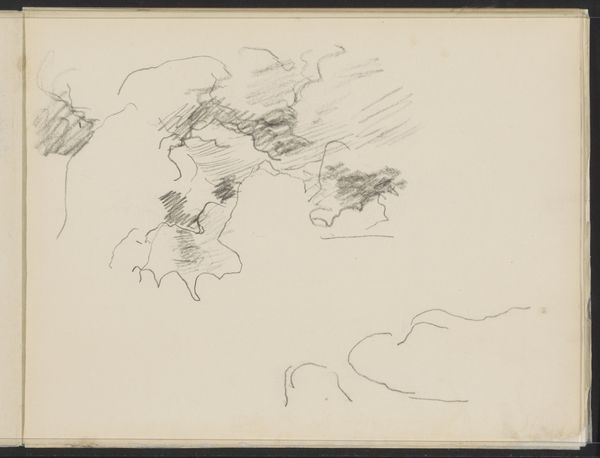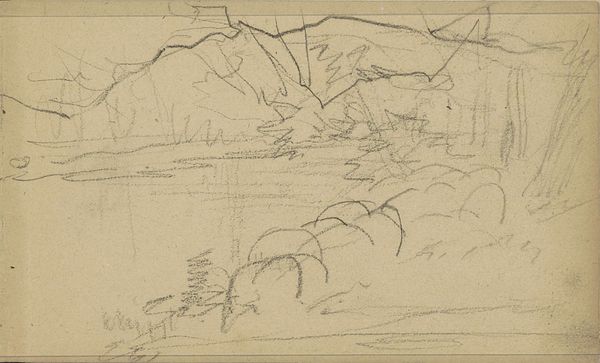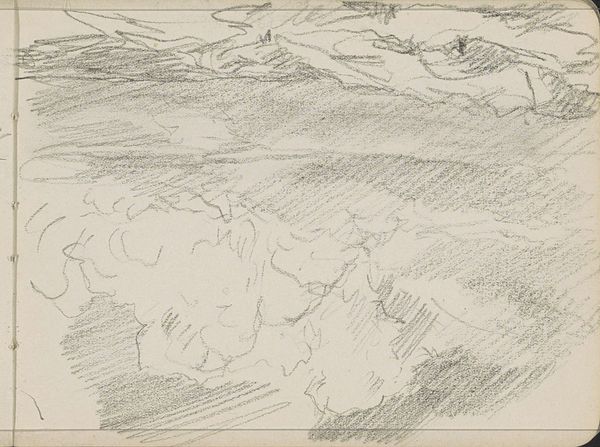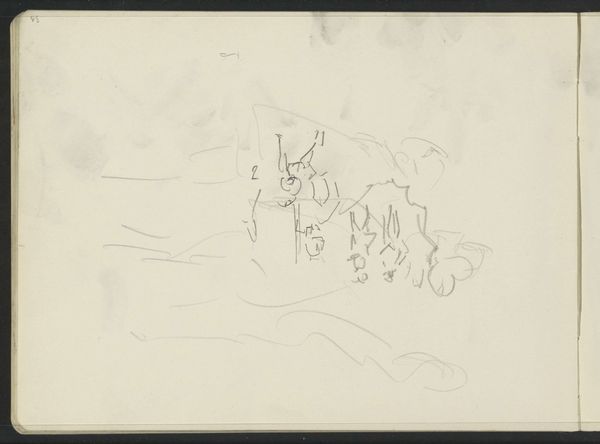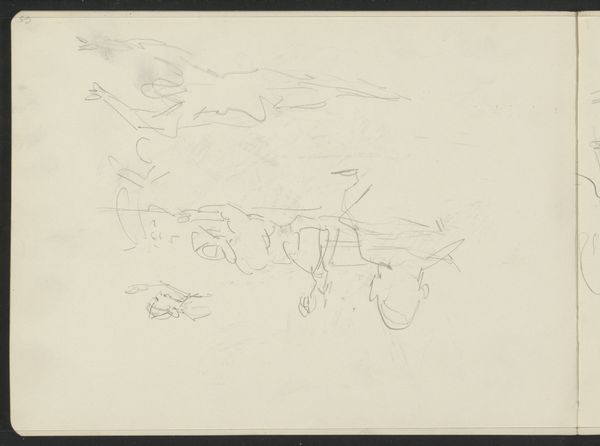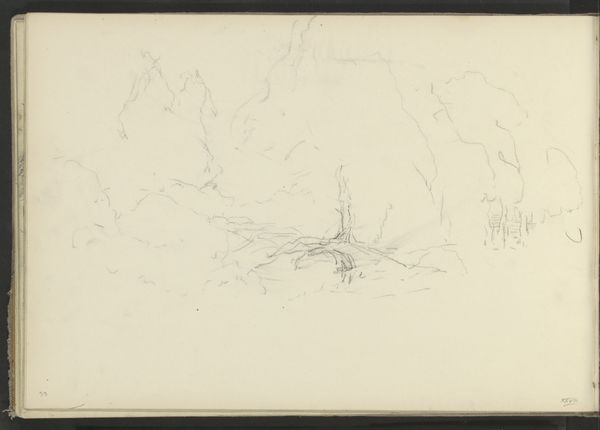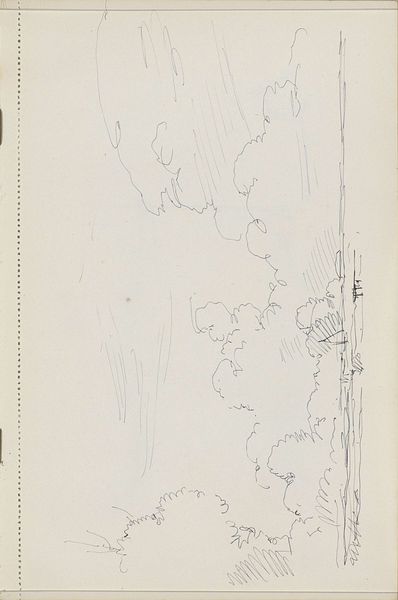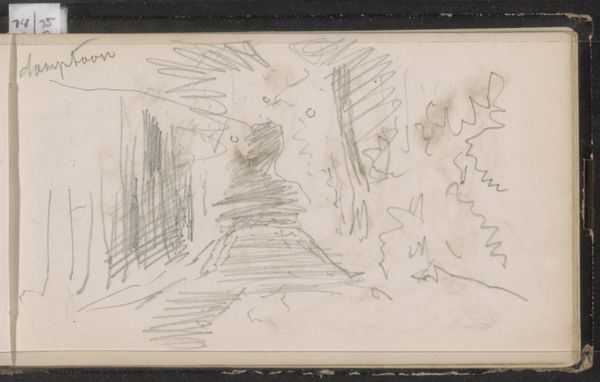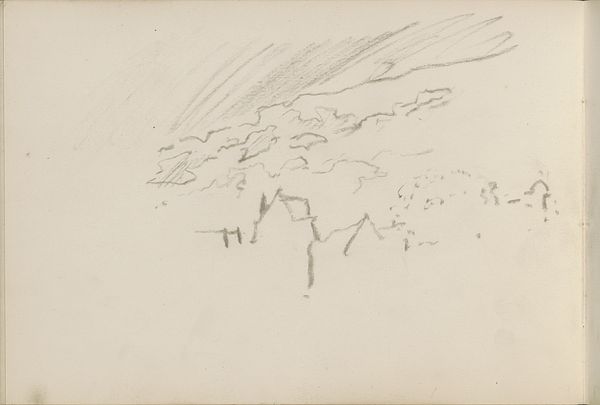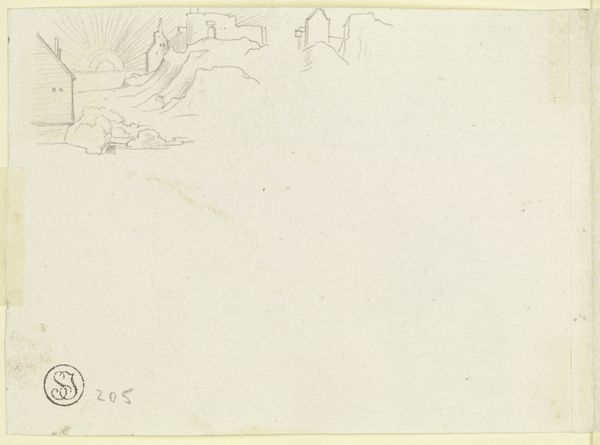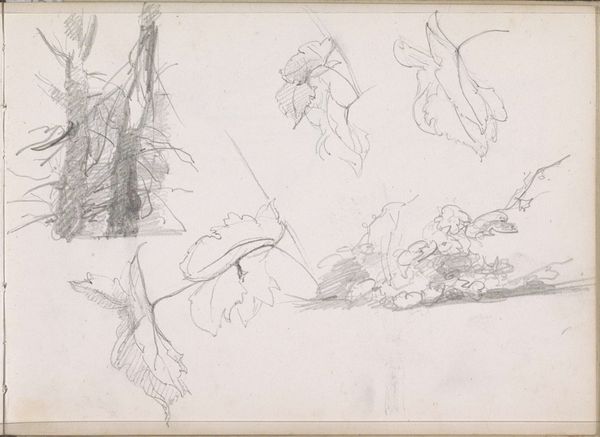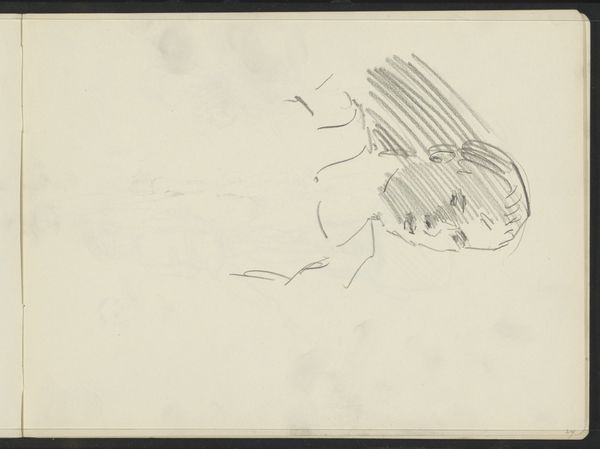
Copyright: Rijks Museum: Open Domain
Curator: Here we have Willem Bastiaan Tholen's "Wolken," dating from 1870 to 1931, currently residing in the Rijksmuseum. It's a drawing, seemingly a page torn from a sketchbook. Editor: It has a breezy, almost ethereal quality. I find the varied pencil strokes creating such depth intriguing despite the simplicity of the subject. You really feel like you could touch those clouds. Curator: Exactly. Tholen, working within impressionistic landscape conventions, was likely engaging with the seriality and fleeting atmospheric conditions popular among his peers, like the Barbizon school painters. This emphasis on direct observation informed not only painting, but the expanded field of drawing. The immediacy of the sketch emphasizes its artistic value, don't you agree? Editor: Undeniably. We often prioritize the finished painting, the polished product. But to see these quick studies gives us a direct link to the artist’s labor, the material thought behind his hand. Was this produced for academic exercises or public sale? What would someone at the time make of the toned paper? Curator: While difficult to pinpoint the intent behind every sketch, there's certainly an academic grounding, though his connection to later impressionist practices makes me see these clouds as a part of a broader engagement with depicting weather phenomenons as public spectacle and artistic commodity. We see those sketches now on sale, as an easily owned object with unique value outside a landscape painting tradition. Editor: It's remarkable how he suggests form with such minimal lines, focusing more on shading to convey volume. One can feel the dampness in the air. I see how quickly accessible yet valuable these studies become as material commodities on the art market. It’s more than just atmospheric record-keeping; it’s artistic exploration ready for institutional validation. Curator: Yes, seeing the labor and commodification makes us realize the complex layers. Editor: Absolutely. It shows the journey of how art making is intrinsically intertwined with materials and how it eventually becomes part of society.
Comments
No comments
Be the first to comment and join the conversation on the ultimate creative platform.
